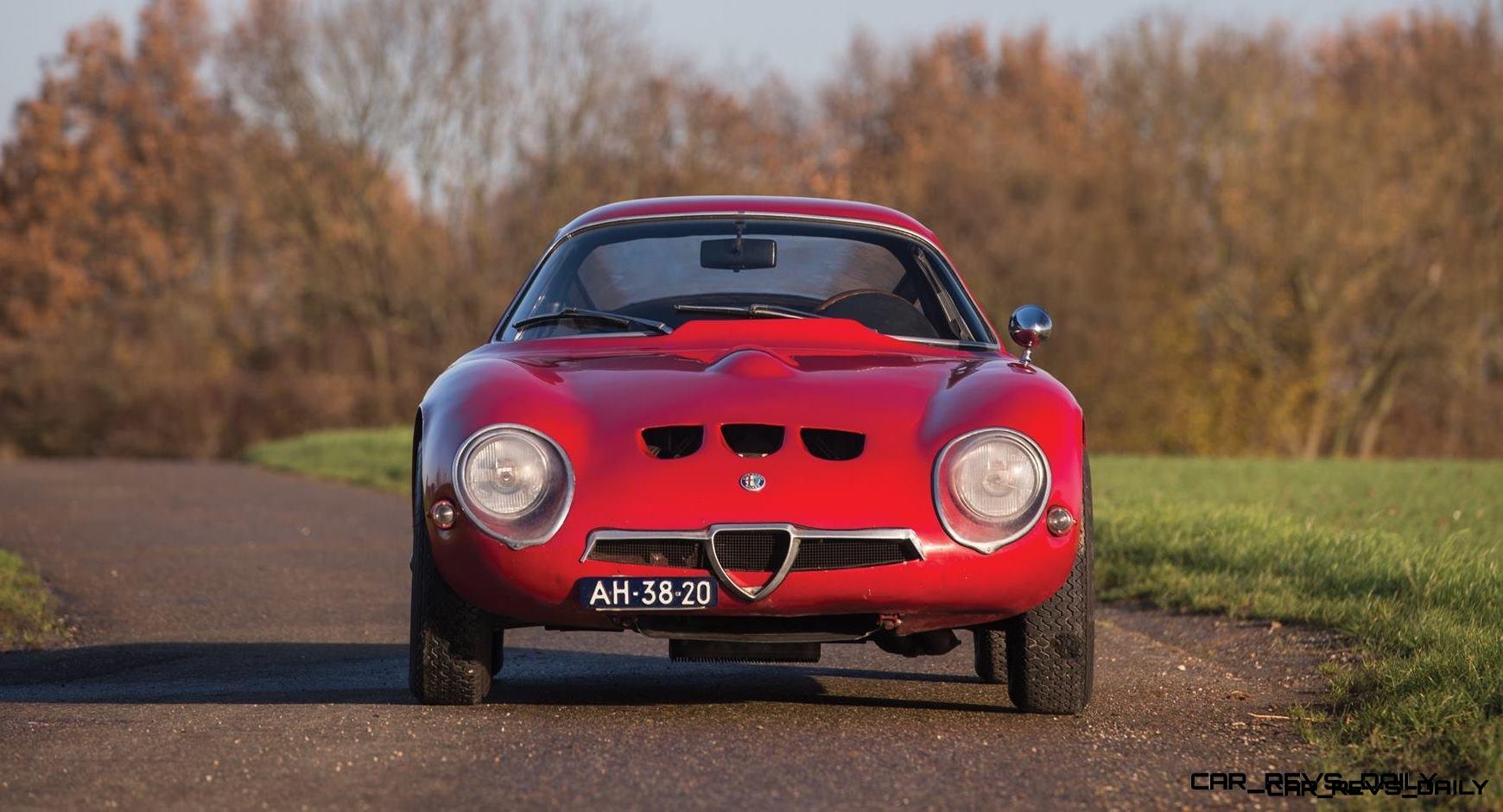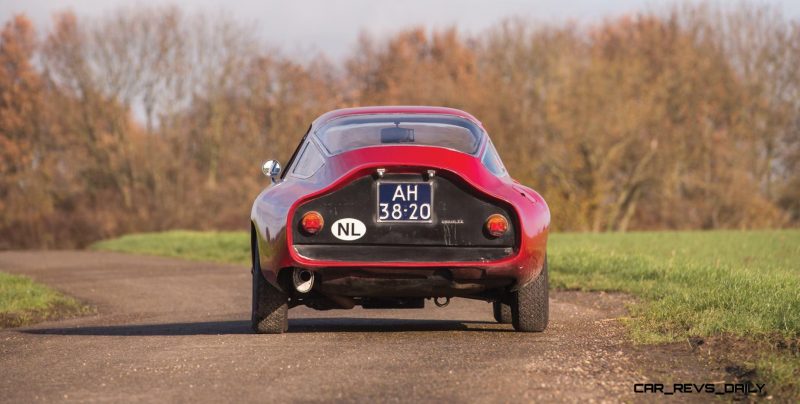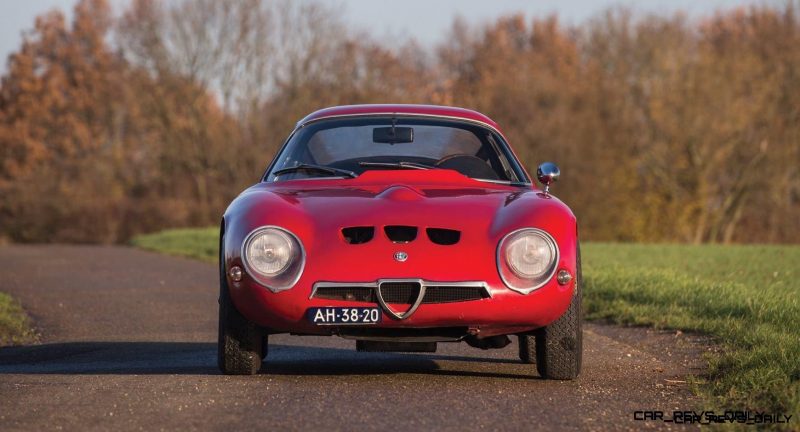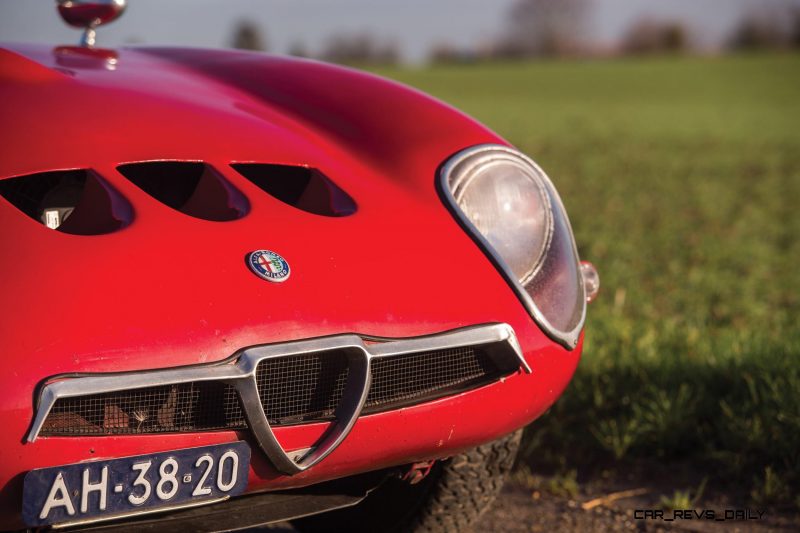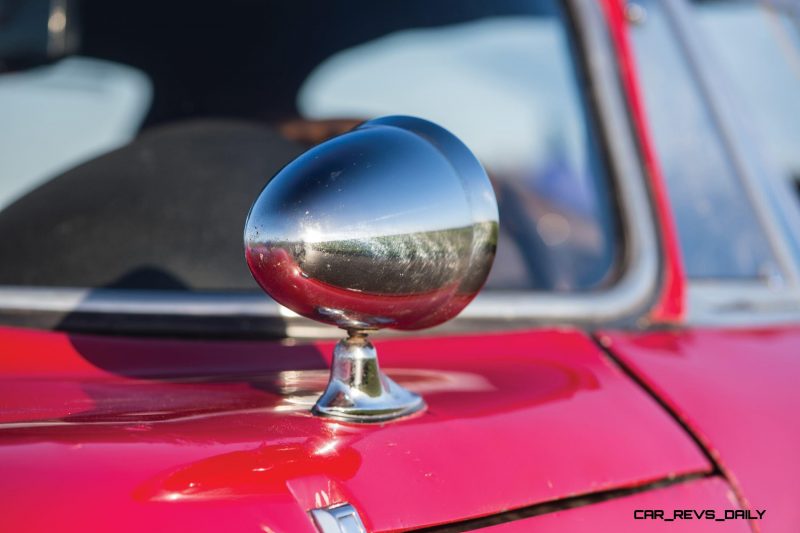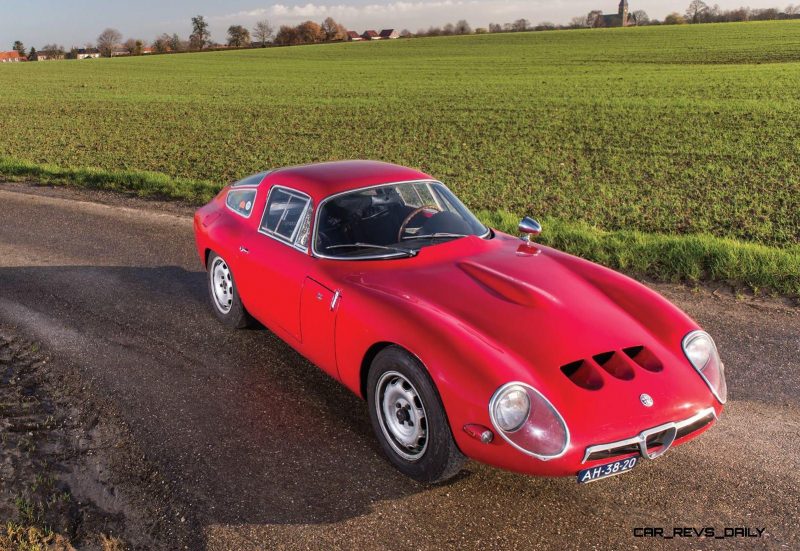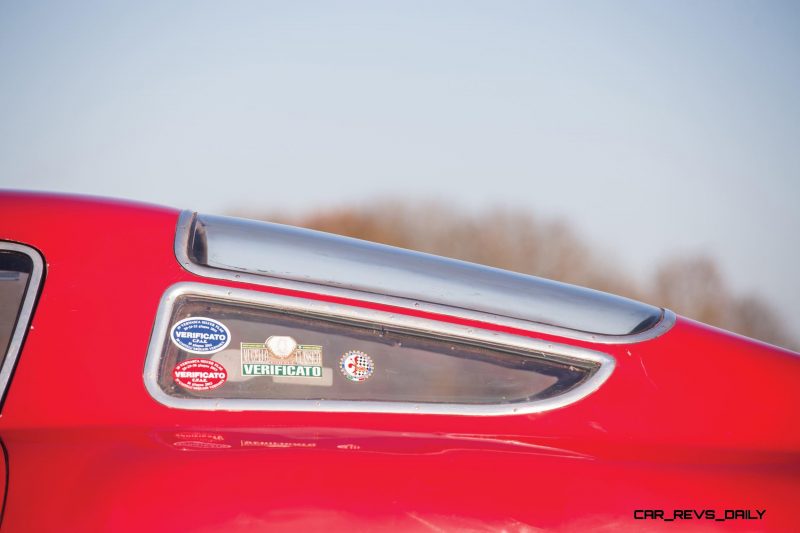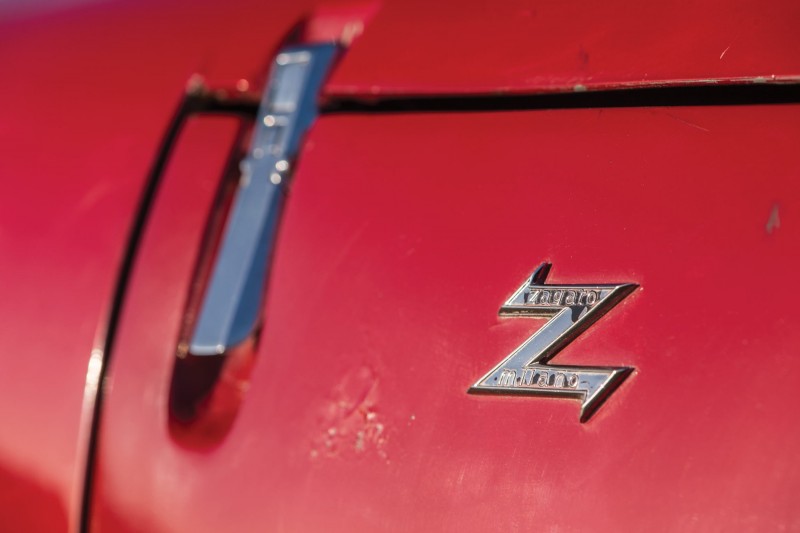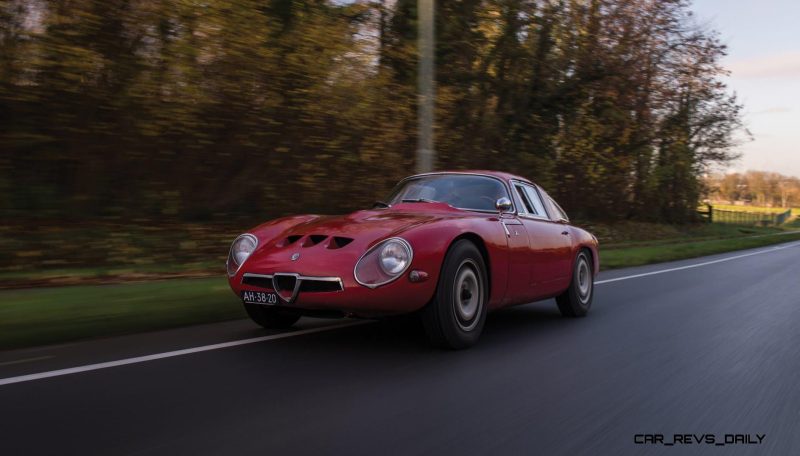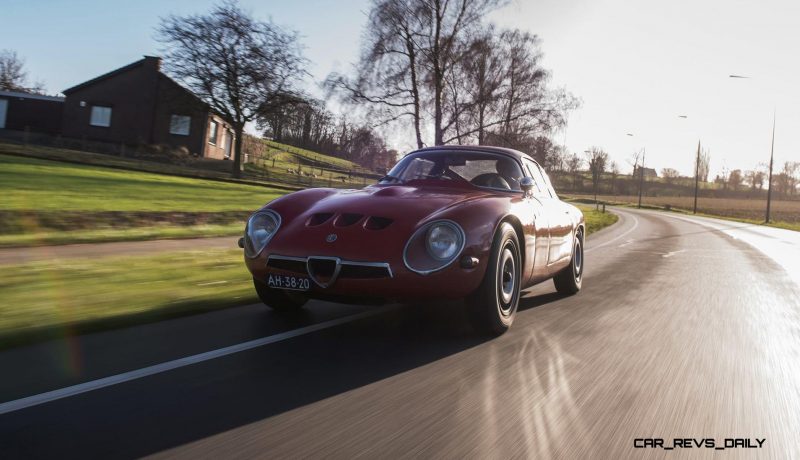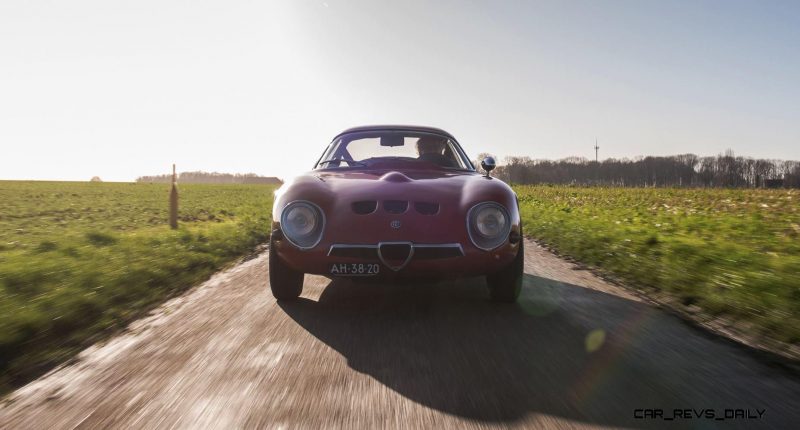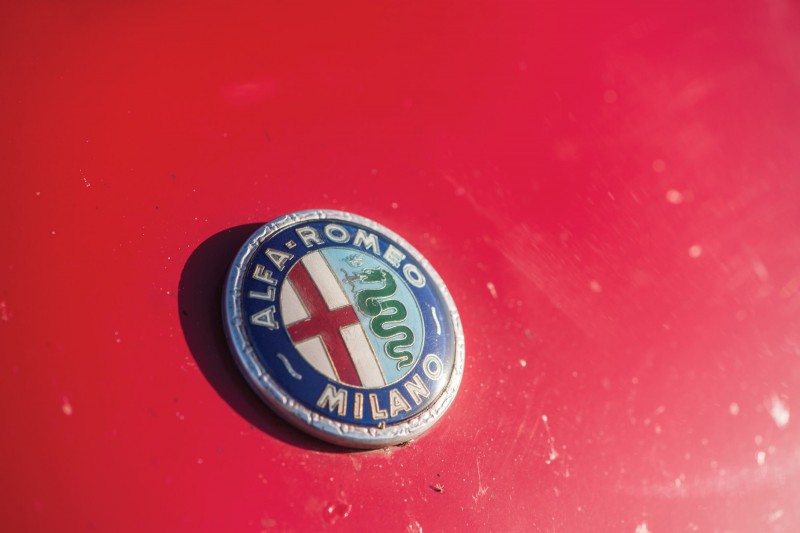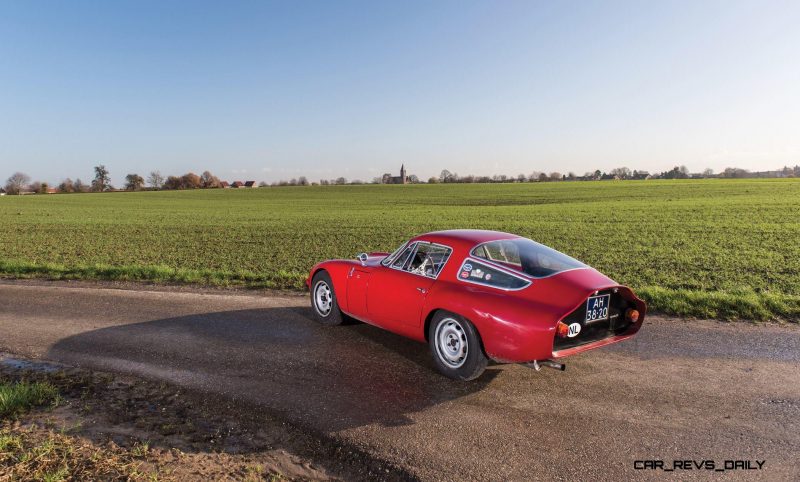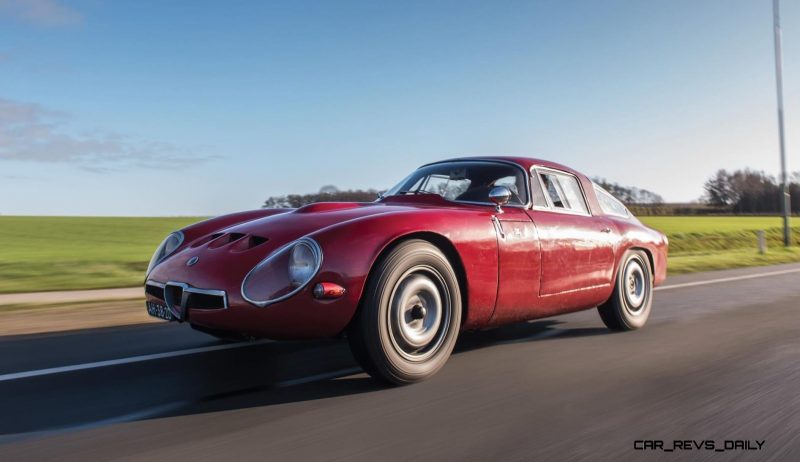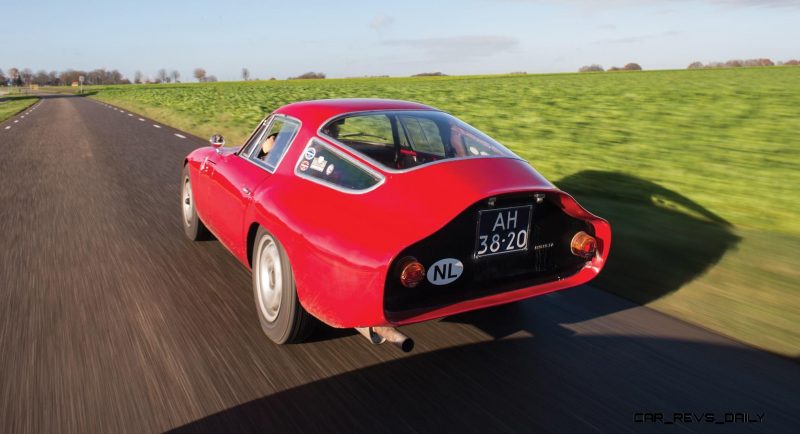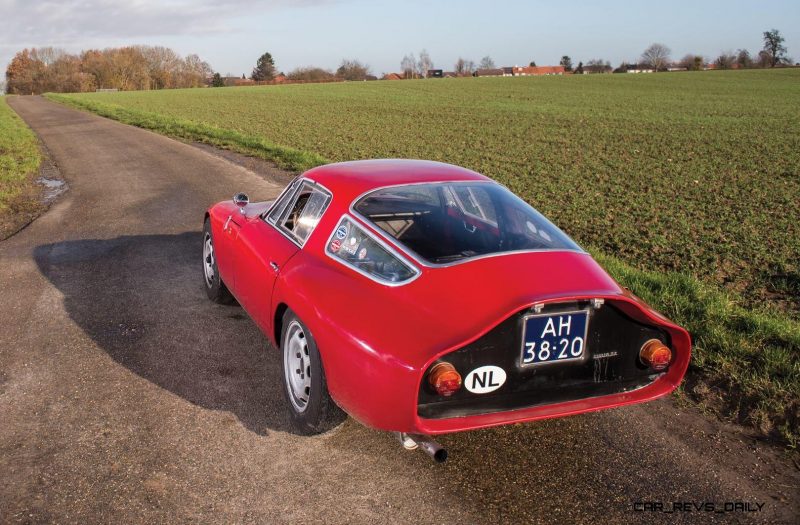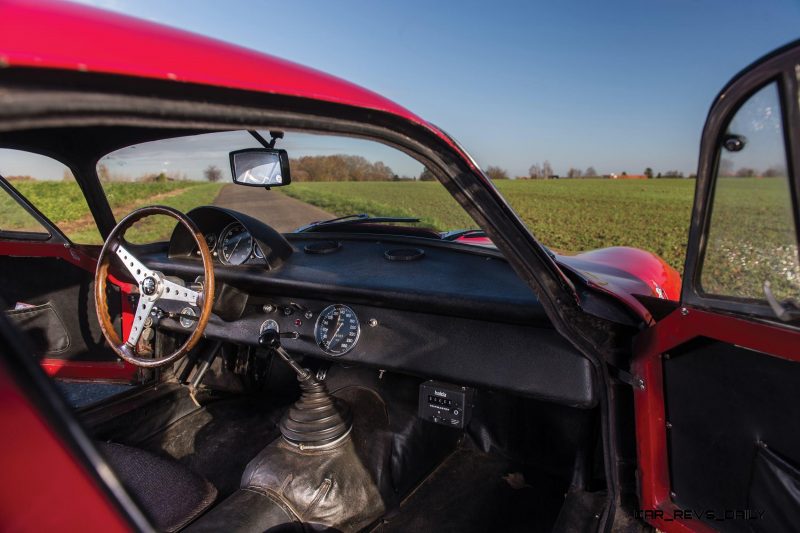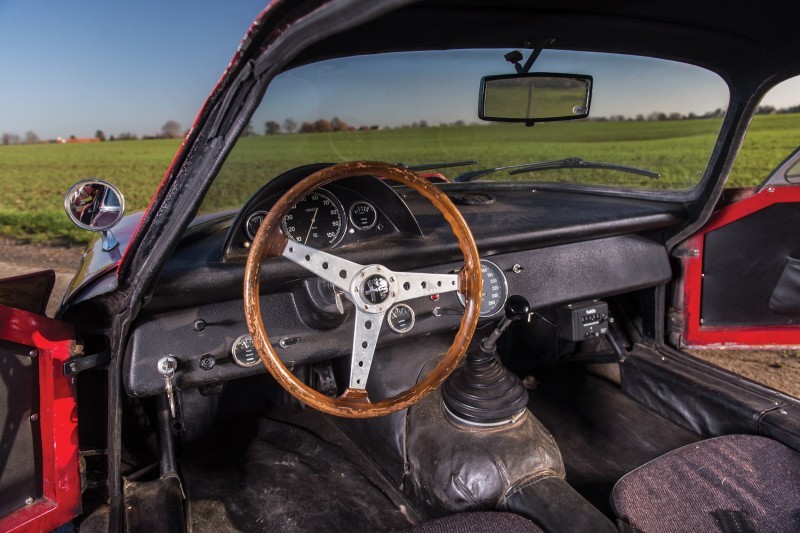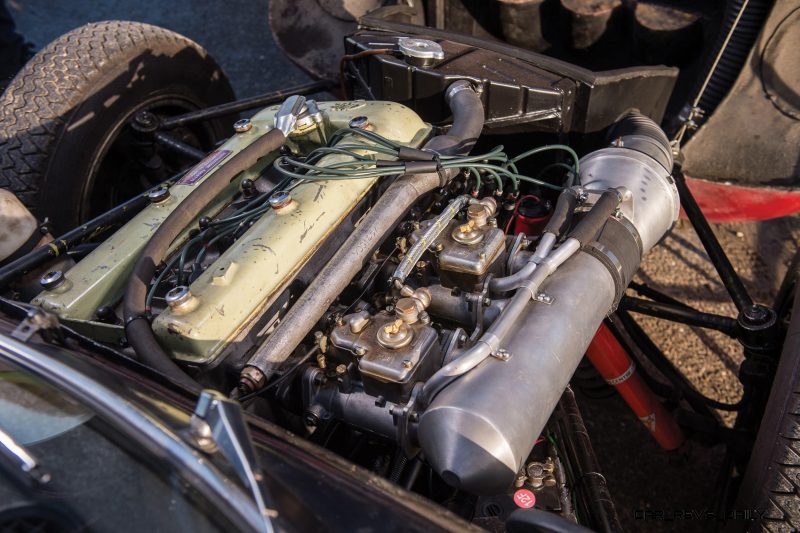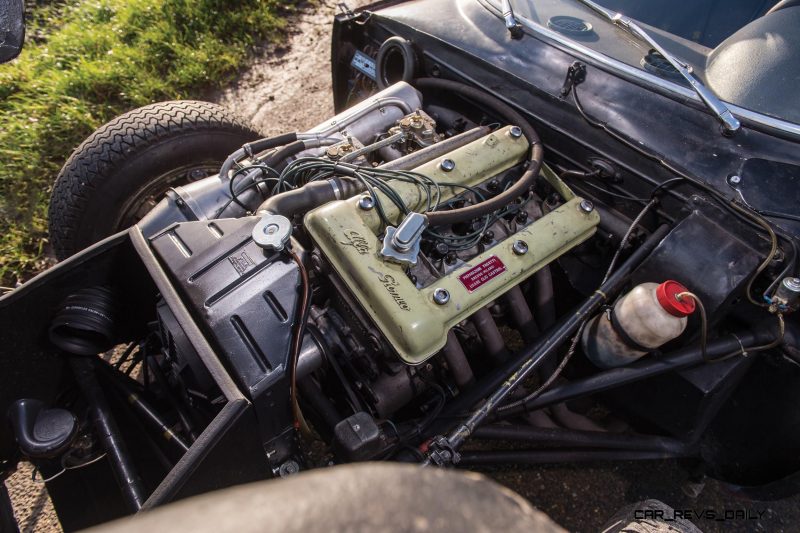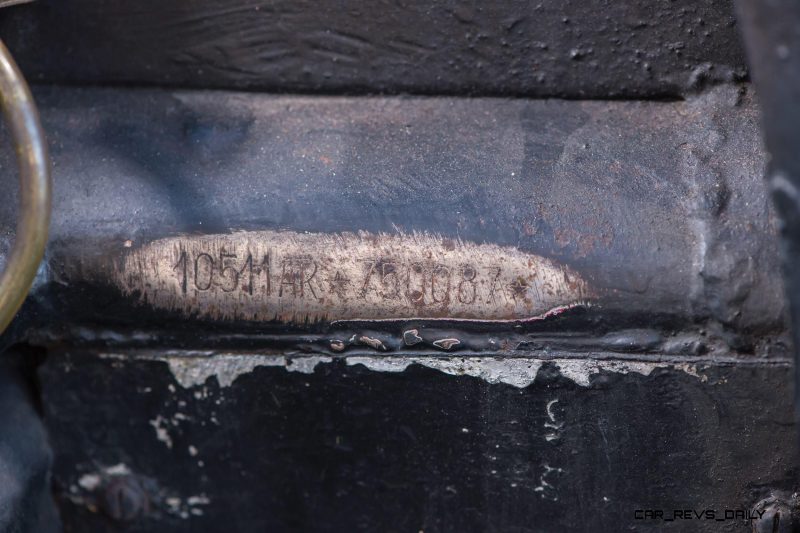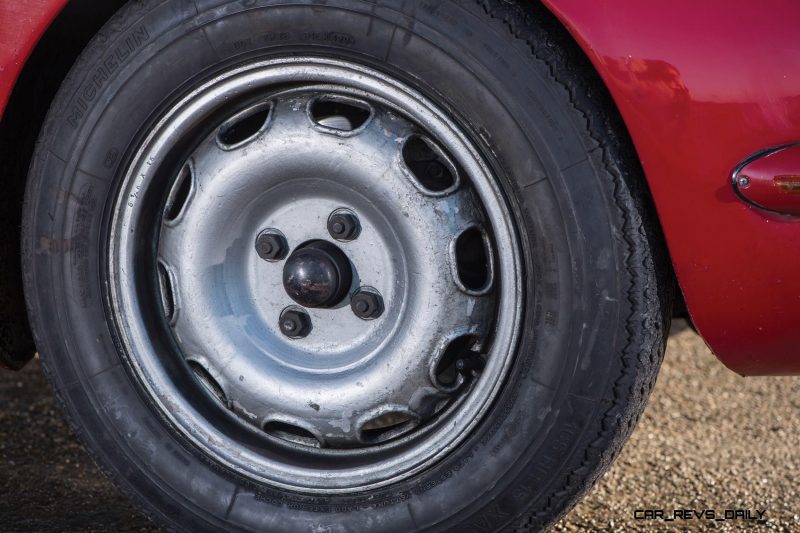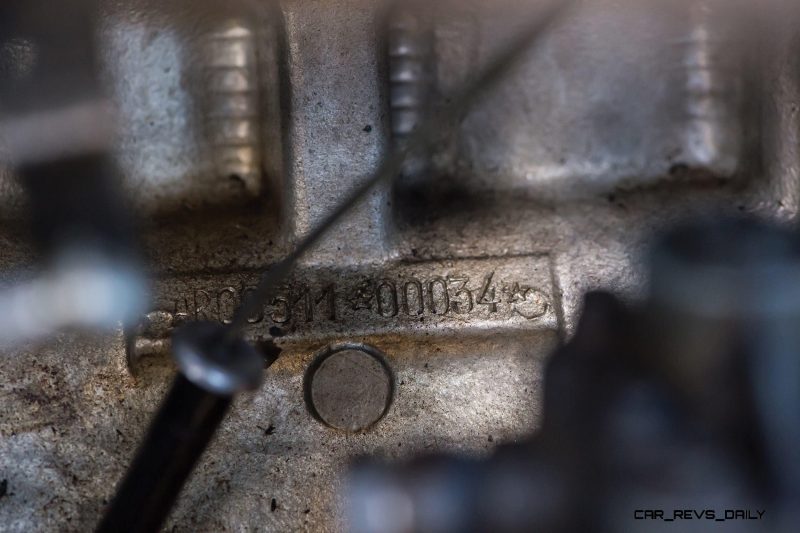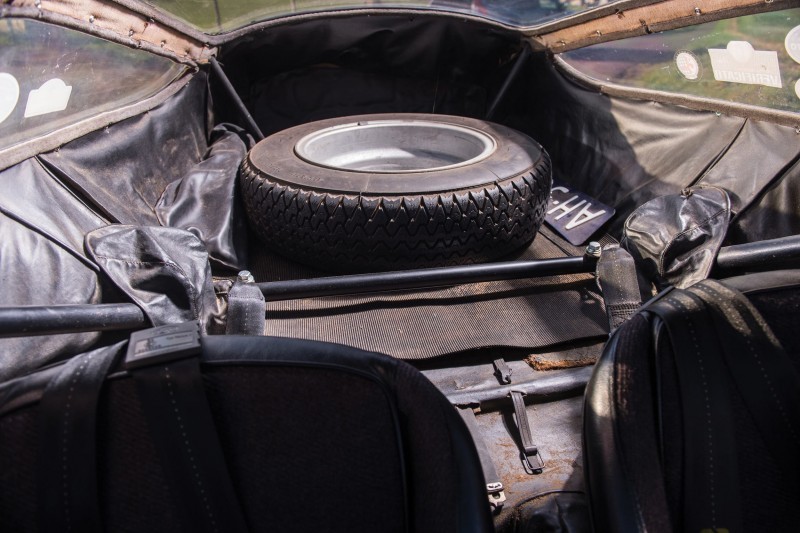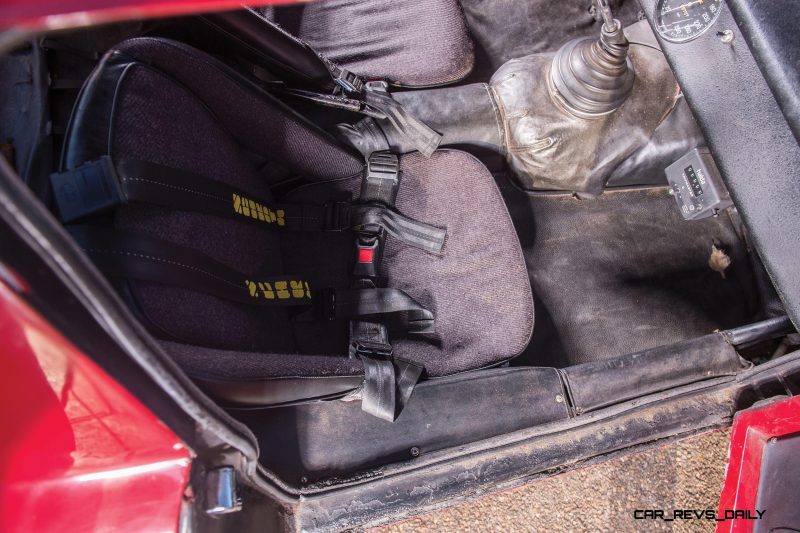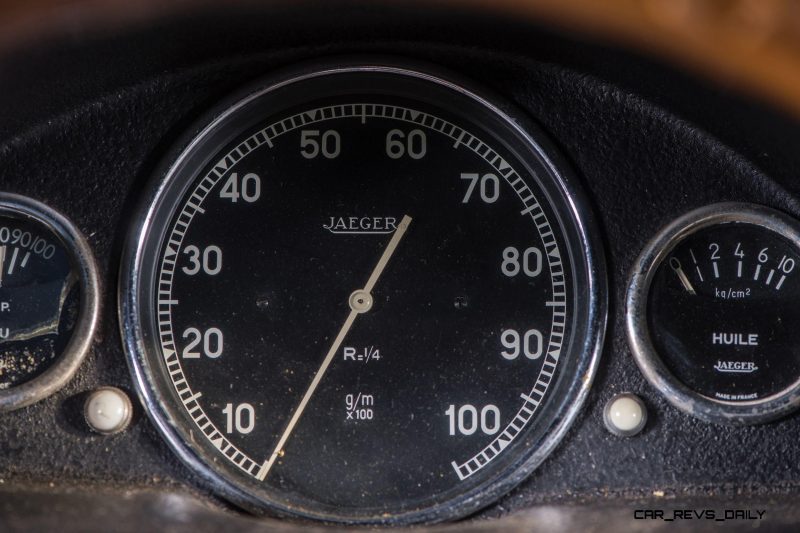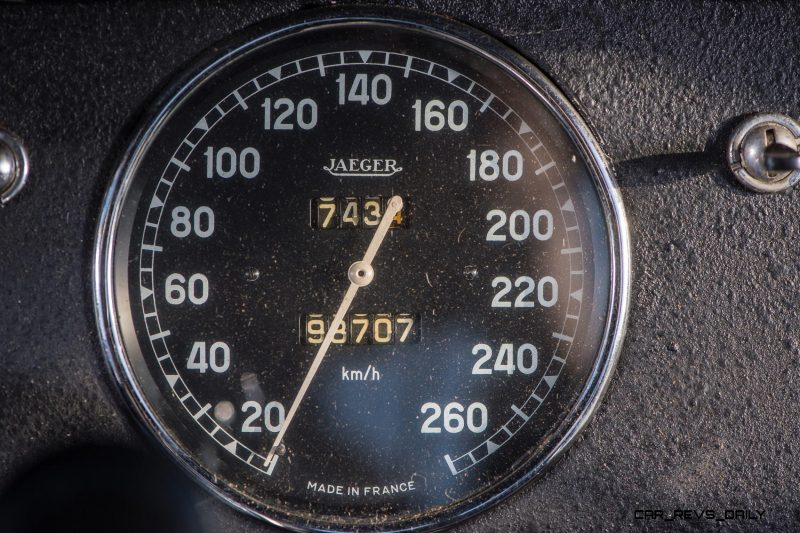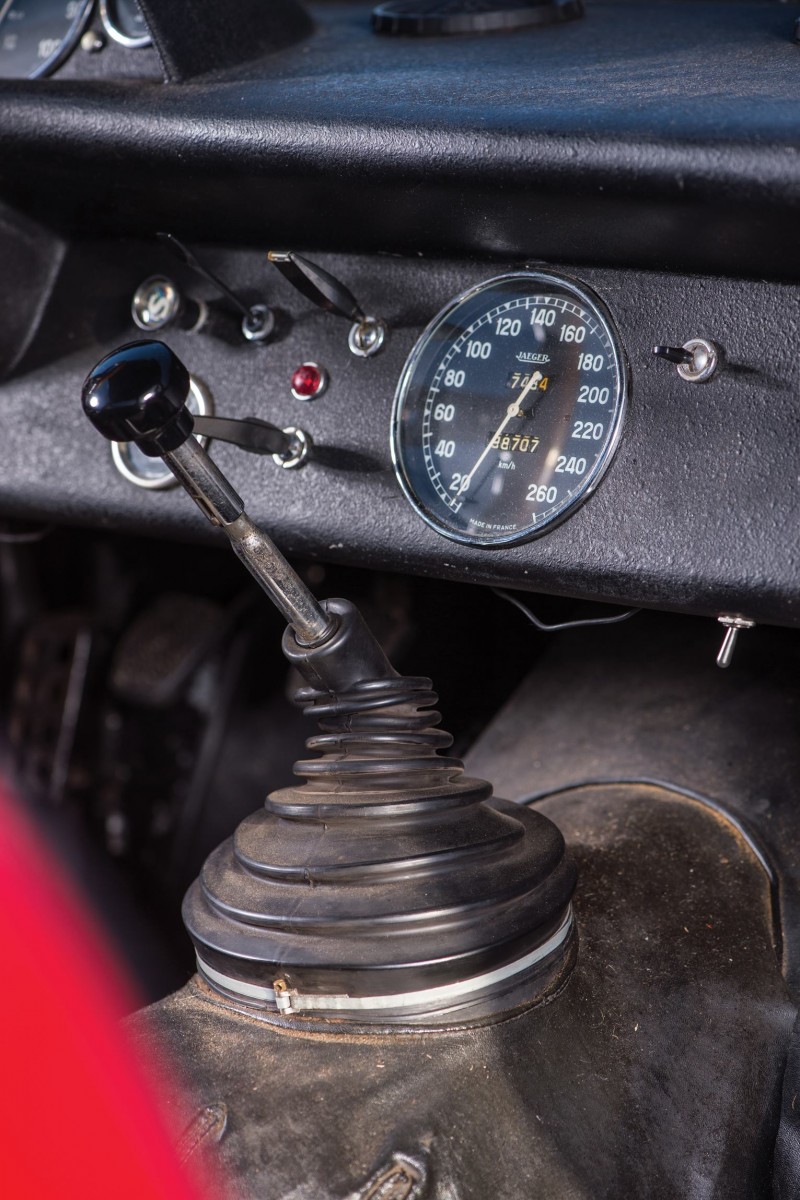This Giulia TZ is sublime.
The car is delightfully compact yet fearsome in its aggressive motorsport details.
That applies well below the featherlight alloy body panels: the chassis with a tubular space-frame formed an exceptionally brilliant way to make a racecar exceptionally strong, yet also super-light.
155 ponies mean you will work hard to squeeze every last drop of power from up front — but that is all part of the Giulia Tubolare Zagato’s authenticity.
1965 Alfa Romeo GIULIA Tubolare ZAGATO
RM Sotheby’s
Paris 2016
Feb 3, 2016
1965 Alfa Romeo Giulia Tubolare Zagato
- Chassis no. AR10511 750087
- Engine no. AR0511 00034
150 bhp, 1,570 cc DOHC inline four-cylinder engine, five-speed manual transmission, front and rear independent coil-spring suspension, and four-wheel hydraulic disc brakes. Wheelbase: 2,200 mm
- Landmark Alfa Romeo model with stunning Zagato coachwork
- Raced extensively in period, including the Nürburgring 1,000 KM
- Eligible for historic motorsport events, including the Tour Auto and Le Mans Classic
ALFA ROMEO’S GTO BEATER
The 105 Series Giulia of Alfa Romeo was introduced at Monza in 1962. The super strong chassis was an evolutionary design, based on the previous Giulietta and 101 Series, however, the 105 introduced major suspension upgrades and, for the first time, disc brakes.
A competition Giulia was introduced at the 1963 FISA Monza Cup. Named for its tubular space-frame chassis and striking aluminium Zagato coachwork, the Giulia TZ (Tubolare Zagato) took the first four places in its class. In 1964, the TZ was FIA homologated (100 units were needed for homologation to the Gran Turismo category) and immediately began logging its impressive string of race wins in Europe and North America. It is believed that, in the end, 100 or so examples were built between 1963 and 1967.
A purpose-built competition GT, the TZ (often called the TZ-1 to distinguish it from the later TZ-2) development was guided by Autodelta, led by ex-Ferrari engineer Carlo Chiti. The TZ shared the same basic 1,570–cubic centimetre engine with the Sprint Speciale and Spider Veloce (later, with the addition of a twin-plug cylinder head). The transmission had heavy-duty, close-ratio gears and a very quick short-throw lever. Reduced bonnet height was achieved by tilting the engine in the frame. The front suspension was a similar design to the standard Giulia, while the rear was an elaborate independent competition type to reduce unsprung weight.
TZs competed in the most important races, were driven by some of the best drivers at the time, and competed against the likes of Ferrari 250 GTOs, Shelby Cobras, Maserati Birdcages, and Porsche 904s. At the 1964 Targa Florio alone, Porsche took the first two spots with their 904s, while Alfa Romeo’s TZs finished in 3rd and 4th with TZs. Ferrari, with their 250 GTOs, took 5th, 9th, 10th, and 12th. Class wins at Sebring, Le Mans, and the Nürburgring that year also solidified the TZ’s position in the annals of motorsport.
A SEASONED CAMPAIGNER
The TZ offered here was built in August 1963 and delivered to its first owner, Karl Foitek, in Switzerland. Foitek was a four-time Swiss Champion (racing and sports cars) with a passion for fast Italian cars. Chassis number 750087 was later sold to Peter Schetty, who was most famous for racing Shelby Mustangs with Scuderia Filipinetti and who also spent several years with Ferrari in the late 1960s and early 1970s. Perhaps unsurprisingly, Schetty traded chassis number 750087 to Uli Maurer in part exchange for a Shelby GT350.
Maurer owned this car for just over a year before selling it to James Bernard Fortmann of team Bardahl Switzerland. Fortmann would send the car immediately to Autodelta for preparation, ahead of a busy summer of racing. In just a few months, this car would finish 5th in Class (Prototype 1600) at the 1968 Nürburgring 1,000 KM, a race where non-finishers included the Jo Siffert Porsche 908 and the David Skailes Ferrari 250 LM.
It would then race at the Hockenheim Ring in the ACS Swiss Championship before competing in the Grand Prix of Mugello. Unfortunately, an accident in practice damaged the rear of the car, and it was unable to start the race. Fortmann once again sent chassis number 750087 to Autodelta for repairs following its successful summer campaign. The car then passed through a number of Swiss owners, during which time the original engine was removed. In 1983, this car passed into the ownership of Ernst Hugentobler, who would keep the TZ for 17 years, before it was purchased by J. Pas, its first non-Swiss owner. Mr Pas has attended a number of clubs and rallies in the car throughout Europe and has sourced an original TZ engine (from chassis number 750066).
With just two owners in the last 32 years, chassis number 750087 is a well-cared-for example of an incredibly rare Alfa Romeo icon. Eligible for nearly every prestigious event around the globe for cars of this era, from the Monterey Historics to the Tour Auto and Le Mans Classic, this Alfa Romeo TZ will be both a welcome entrant and a thrill to drive.

Tom Burkart is the founder and managing editor of Car-Revs-Daily.com, an innovative and rapidly-expanding automotive news magazine.
He holds a Journalism JBA degree from the University of Wisconsin – Madison. Tom currently resides in Charleston, South Carolina with his two amazing dogs, Drake and Tank.
Mr. Burkart is available for all questions and concerns by email Tom(at)car-revs-daily.com.

